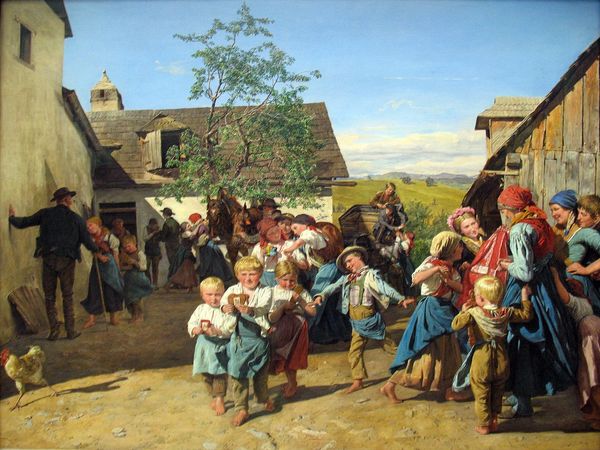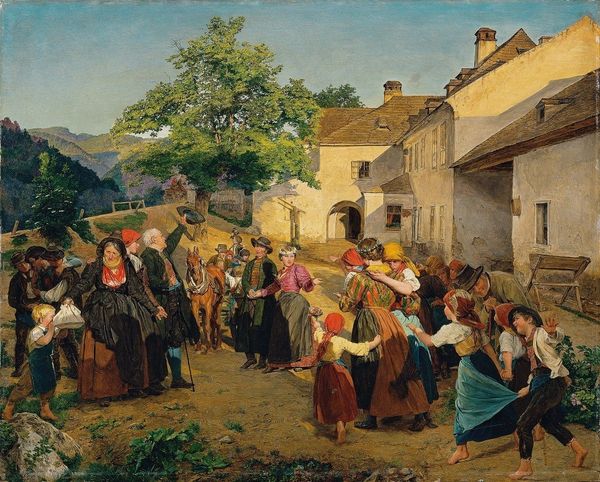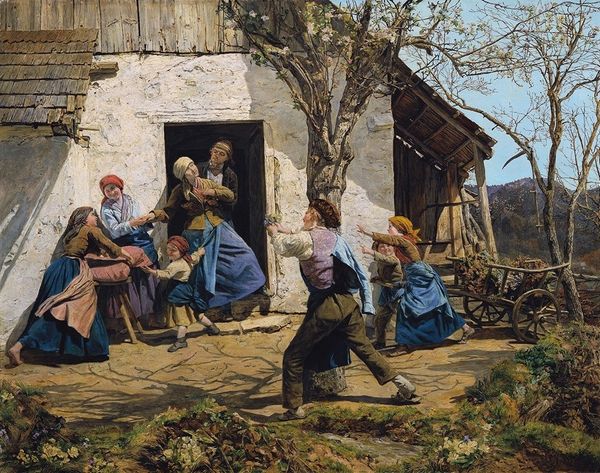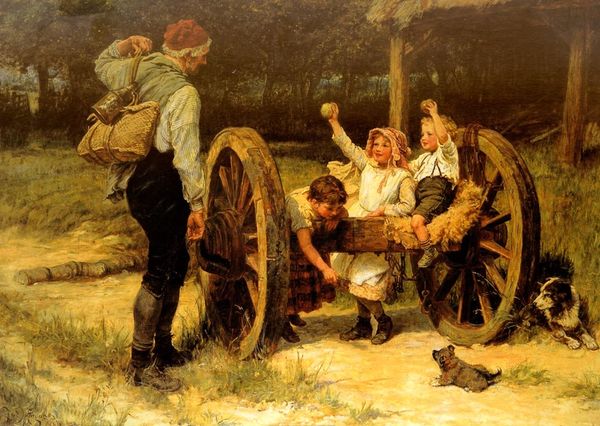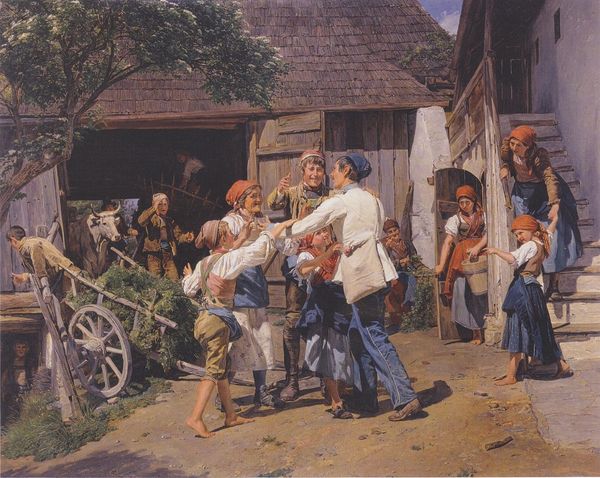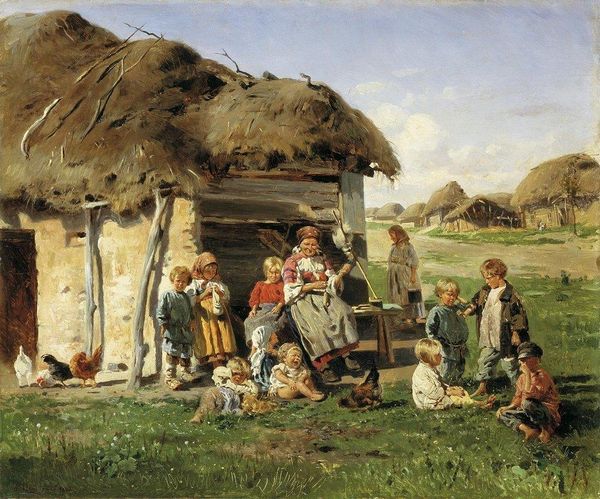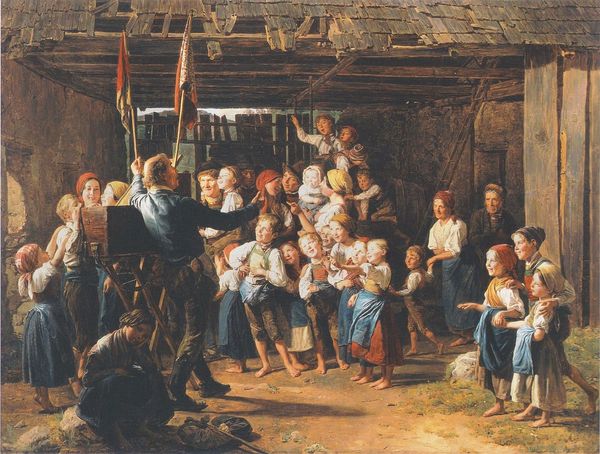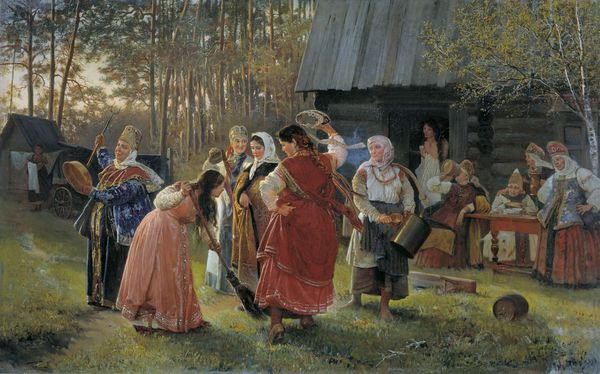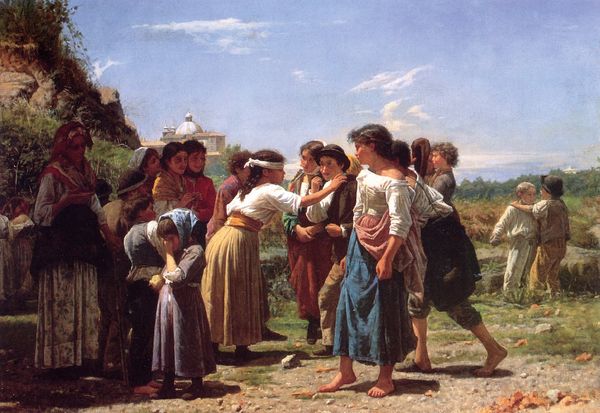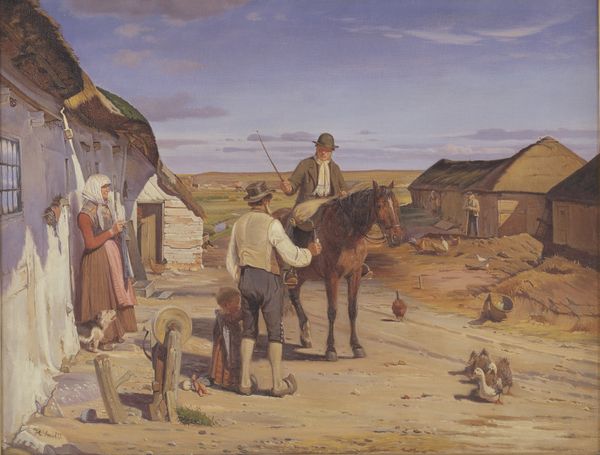
Copyright: Public domain
Curator: Let’s explore Ferdinand Georg Waldmüller's "Farewell to the bride by the parents," created in 1863, rendered in oil paint. Editor: My first impression is a feeling of bittersweet joy. It's such a busy composition, everyone's touching or reaching. Curator: Waldmüller's pieces often portrayed rural life. Think about what’s depicted – a community sending off a young woman. We must ask: what materials did he use and where did he source them? Did local workshops contribute? How did their skills shape his aesthetic? Editor: Right. It’s critical to unpack the socio-economic implications embedded within that idyllic veneer. Who has access to the raw materials and skills needed for creating art? And who, conversely, is shut out? This departure isn't merely sentimental; it is indicative of 19th century patriarchal norms shaping women's destiny through marriage. It evokes broader historical themes tied to the economic survival of families and what it means to leave that safety behind to be someone's wife. Curator: We can also consider how his brushstrokes convey detail. Notice the texture of the building’s stone. Did his available pigments constrain him? Understanding these constraints provides insight into not only his work but 19th century oil production at large. The act of painting is labor, and Waldmuller uses layers and shading, mixing colors, perhaps using unconventional methods for the time to produce this affect. Editor: And labor extends beyond the studio! These social narratives need to be highlighted to interrogate how tradition both reinforces bonds but simultaneously creates barriers. Do you see the different layers to the society portrayed through a lens that doesn't sugar-coat how hard things would be? How does the bride's experience relate to societal expectations around family? Curator: Yes! Thinking critically about technique and access opens paths to appreciate craft and broader historical labor practices of art at the time. Editor: For me, its power is how it brings discussions about intersectionality and agency in that historical period. It pushes for more than surface aesthetic appreciation and connects visual analysis with impactful political reflection.
Comments
No comments
Be the first to comment and join the conversation on the ultimate creative platform.
